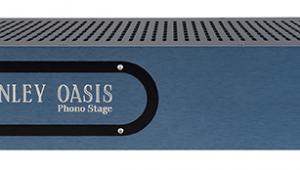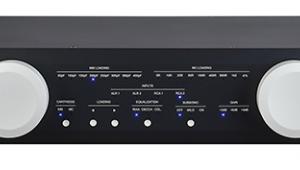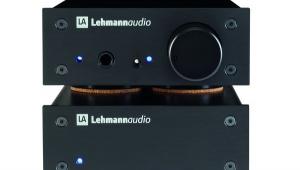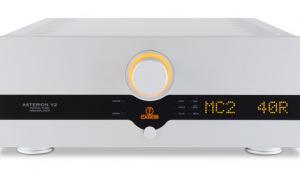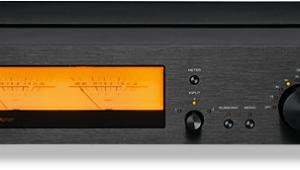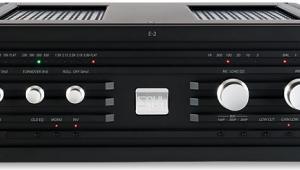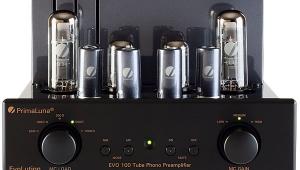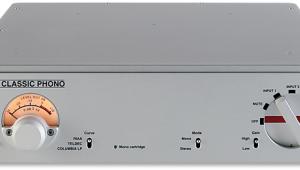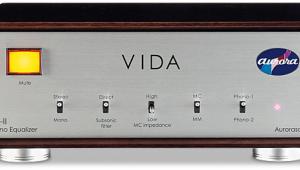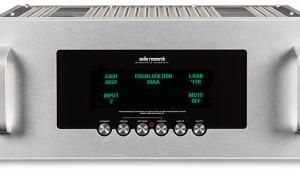Zesto Andros Deluxe II Phono Preamplifier
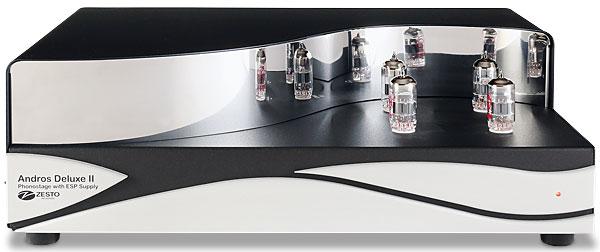
 From California via London comes the shapely form of Zesto's Andros phono preamp – all tubes and transformers and now, courtesy of an uprated PSU, in 'Deluxe II' guise
From California via London comes the shapely form of Zesto's Andros phono preamp – all tubes and transformers and now, courtesy of an uprated PSU, in 'Deluxe II' guise
If you demand full control over your cartridges, an all-singing/all-dancing phono preamp like the Zesto Andros Deluxe II is the only thing that will suffice. At £7500, it occupies the lower reaches of the extreme phono stage market – there are £40k-plus units if you're inspired to go further – but one should still be hyper-critical when the market is awash with exceptional, fully-adjustable phono amps for under £1000.
With the Deluxe II version of Zesto's Andros we are looking at an all-tube phono amp with more than enough features to excite and satisfy the multiple cartridge/arm/turntable user. In an era when balanced outputs are no longer a rarity, the Andros Deluxe II offers not just balanced alongside conventional single-ended RCAs, it also provides both RCA/XLR inputs for MC. (MM is single-ended only.)
Back Stage
Only one of the two MC inputs can be used at a time, so lateral thinkers can forget about simultaneously connecting two MC pick-ups via both sets of inputs. I don't own an arm terminated in XLRs, so that was the one area I didn't audition, but I did hook up the Andros Deluxe II to my preamps in both modes. And balanced is preferred.

While there are no controls on the front – a loaded fascia comes with the model up, the two-chassis Tessera – the back is packed. A study of the manual will save you time-wastage later on, but briefly, this unit will accommodate one MM and one MC at the same time, serving users of two decks or a deck with two arms.
If this seems like overkill, the Tessera offers MM and MC for both sets of inputs, effectively allowing four cartridges to be connected should you need it. As outré as this appears, some hard-core LP users are known to keep stereo, mono and 78rpm cartridges available at all times, so it's not an outrageous option.
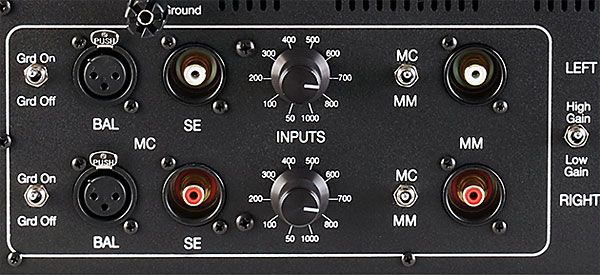
When you install the Andros Deluxe II, in addition to the choice of MM/MC and balanced or single-ended, you are faced with duplicated controls for most of the settings because the unit is effectively two mono stages in one chassis. Thus, when you switch from MM to MC or vice versa, you trip not one but two toggle switches; the same goes for earth on/off. MC loading is applied via separate rotaries for left and right channels, these offering 50, 100, 200, 300, 400, 500, 600, 700, 800 and 1000ohm settings… surely enough to cover the majority of MCs.
Only two elements are shared: the single earthing terminal and one toggle for high or low gain, which acts on both MM and MC. This offers a claimed 63dB/68dB for the MC input and 45dB/50dB for MM, bringing added control for low or high output cartridges. I have no truly extreme cartridges in my arsenal, nothing of exceptionally low output, so I had no problems at all accommodating four MC pick-ups from different manufacturers, nor a brace of MM cartridges. The only absent adjustment is capacitance for MM cartridges, for here the unit is set at 220pF.
Fast Talking
Company founder George Counnas explained his design choices over a phone call and emails, admitting to a love for valves, believing them to be, among other virtues, 'faster than solid-state devices'. He is a fetishist about the retrieval of fine details, arguing succinctly that this is required for convincingly authentic reproduction, so low noise is also a primary concern. That was his justification for using an MC transformer for the step-up. 'It provides a better impedance match for cartridges, with low noise', he declared.
He employs a two-stage valve amp with switchable gain, noting that, 'It actually has four stages, with each tube incorporating two stages. And they're switchable to match more cartridges'. Passive rather than active RIAA was preferred because, 'There's no negative feedback in the unit. Negative feedback is required for active RIAA'. As for the transformer-coupled balanced output, Counnas proudly points out that 'this is not usual or common with phono stages. It provides true – not faux – differential balanced output that's not related to ground, so it's quieter'.
![]() Clear The Air
Clear The Air
With these pronouncements running through my head, perhaps I was primed to expect a quiet unit, rich in low-level detail. I was not disappointed. My listening notes reflect the strengths and weaknesses common throughout the sessions, the only observation relative to cartridge or output type is that this unit begs to be heard in its most untrammelled form: with a thoroughbred moving-coil cartridge and using the balanced output.

